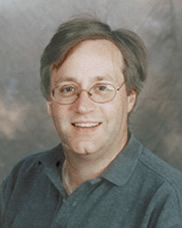Events
Organic Semiconductor Chemistry
December 13, 2012 at 3pm/36-428
Seth Marder
Department of Chemistry/Biochemistry, Director, Center for Organic Photonics and Electronics, Georgia Tech

Abstract:
Organic semiconductors have attracted interest for electronic applications due to their potential for use in low-cost, large-area, flexible electronic devices. While many examples of organic semiconductors for p-channel and n-channel organic field-effect transistors (OFETs) and organic photovoltaic systems (OPVs) have been reported in the recent literature, there is a paucity of high-performance, solution-processable, small-molecule electron transport materials. Here, we report that bis(NDI) derivatives with conjugated bridging groups based on fused heterocycle ring systems can be used to create solution-processed films that exhibit OFET electron mobility values of up to 1.5 cm2V–1s–1, which is among the highest yet reported for an n-channel OFET based on a solution-processed small molecule. In addition we will discuss the development of metal complexes that can be used to both n-dope or p-dope organic semiconductors and the use of surface modifiers to vary the work function of electrodes for use in optoelectronic applications.
Bio:
Seth Marder is currently the Georgia Power Chair of Energy Efficiency and Professor of Chemistry and Materials Science and Engineering, (courtesy) at the Georgia Institute of Technology. Dr. Marder obtained a Bachelors of Science in Chemistry from MIT in 1978 and his Doctorate from the University of Wisconsin-Madison in 1985, where he was a W. R. Grace Fellow. Dr. Marder then was a postdoctoral researcher at the University of Oxford from 1985–1987. After his stay at Oxford, he moved to the Jet Propulsion Laboratory (JPL) California Institute of Technology (Caltech) where he was a National Research Council Resident Research Associate from 1987–1989.
He later became a Member of the Technical Staff at the Jet Propulsion Laboratory, a Member of the Beckman Institute at Caltech and Associate Director, for the Office of Naval Research Center for Advanced Multi-Functional Nonlinear Optical Polymers and Molecular Assemblies, until he moved to the University of Arizona in 1998. He is the Deputy Director and co-principal investigator on the National Science Foundation Science and Technology Center: Materials and Device for Information Technology Research. In 2003 he moved to the School of Chemistry and Biochemistry at the GT where he was appointed the founding director for the Center for Organic Photonics and Electronics and holds a courtesy appointment in the School of Material Sciences and Engineering. He is the co-Director of Georgia Tech’s NSF-Materials Research Science and Engineering Center, (MRSEC), Director of the AFOSR-Center for Organic Materials for All-Optical Switching, and an Associate Director for a DOE, funded Energy Frontier Research Center.
His research interests are in the development of materials for nonlinear optics, applications of organic dyes for photonic, display, electronic and medical applications, and organometallic chemistry. Recently, his research group has been systematically designing dyes for large two-photon absorption cross sections for a variety of applications ranging from two-photon induced polymerization to dyes for two-photon fluorescence microscopy.
Dr. Marder was the 1993 recipient of JPL’s Lew Allen Award for outstanding research by a scientist in the early part of his career, a recipient of an NSF Special Creativity Award, and a Fellow of the American Association for the Advancement of Science (2003) and the Optical Society of America (2004), SPIE (2006), the Royal Society of Chemistry (2007) and the American Physical Society (2009). He also received the 2009 Georgia Institute of Technology Outstanding Award for Research Program Development and a 2011 American Chemical Society A.C. Cope Scholar Award.
He has co-authored over 350 peer reviewed research papers and holds over 20 patents, has organized or served on organizing committees for over forty scientific conferences, including chairing the Seventh International Conference on Organic Nonlinear Optics, co-chairing the Ninth International Conference on Functional Pi-Systems, and the 2012 International Conference on the Science and Technology of Synthetic Metals. In addition Dr. Marder has co-edited several proceedings including for the ACS, SPIE and MRS. He has served on the Board of Reviewing Editors for Science Magazine, and as a member of the Editorial Board for Chemistry of Materials, Nonlinear Optics and Quantum Optics, the Journal of Materials Chemistry and the International Advisory Board for Chemical Communications and Advanced Functional Materials. He has also been a guest editor for several journals including an issue of Advanced Functional Materials and has recently co-edited two Special Volumes of Advances in Polymer Science: Photoresponsive Polymers and has served as the Chair of the editorial board for the RSC Journal of Materials Chemistry.






